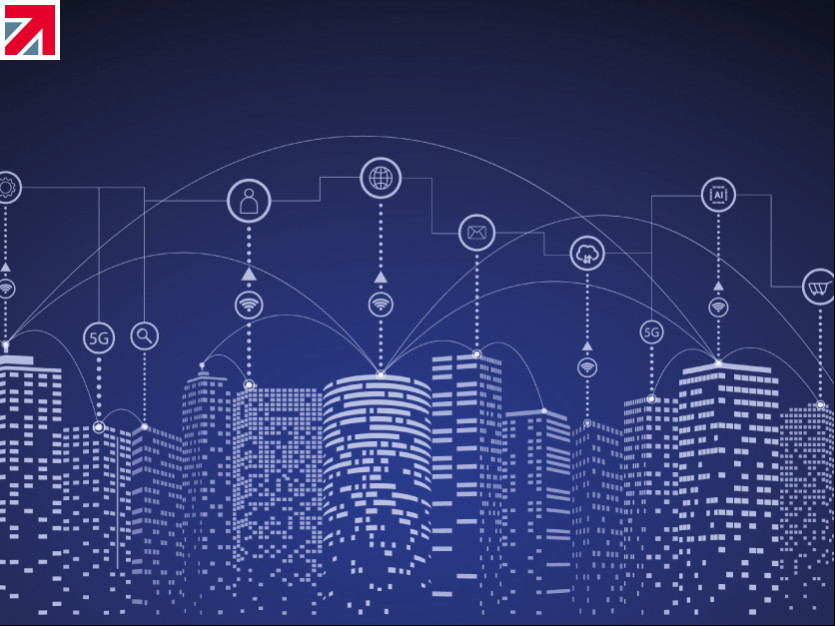As smart buildings continue to grow in popularity, converged networks are becoming more interesting as an optimised solution for specifiers. By providing multiple services through one structured cable network, developers can streamline all services connected to a building, eliminating redundancies and optimising the delivery of each service.
However, while the smart revolution grows, in many cases, emergency lighting - a key aspect of any fire safety system - continues to remain a manual task. This places a burden on facilities management teams, especially over multiple estates, where performing regular manual tests for emergency lighting takes a significant amount of time that could be better spent elsewhere.
Understanding the Converged Network
Converged networks are being utilised within smart buildings to create efficiency. From a tenant’s point of view, they are receiving an elevated customer experience: one network that provides uncapped internet connectivity - where they can also leverage smart features such as temperature control and circadian lighting. From a building management perspective, a converged network creates a flexible and secure foundation for a smart building’s current and future needs.
A converged network streamlines building infrastructure systems, and will securely provision cloud-connected operational technologies, such as building management systems; access controls; occupancy monitoring; heating, ventilating and air conditioning (HVAC) and security systems.
Previously, these operational technologies would have been disparate, managed over individual networks and interfaces - posing a potentially overwhelming task for facilities managers. A converged network removes that tedium, and compiles all of these systems into a single pane of glass, accessible through one portal.
Adding Emergency Lighting to the Network
There is a real drive for these buildings to move towards smarter data management, but all of these structures - whether they are smart or not - have the same level of fire safety compliance. Yet, as mentioned above, many smart buildings continue to operate their emergency lighting systems manually. A critical aspect of the fire safety system, manual testing requires management teams to turn a key switch on a wall and physically observe whether systems are still working. True safety is ensured by the mandatory testing and maintenance of the system as well as routine physical inspections of the luminaires and associated components. For smaller facilities management teams in charge of a number of buildings, this is not a quick task.
While other operational technologies within smart buildings are utilising converged networks to streamline processes and create more efficient management of premises, it makes sense that emergency lighting - a priority system for ensuring safety and regulatory compliance within buildings - is also included in this network.
Delivering Automated Emergency Lighting
By deploying an intelligent operating system with diagnostic capabilities on a converged network, facilities managers can achieve a high level of control over emergency lighting within smart buildings, removing the need for manual testing and including the automated function into the single interface that controls other operational technologies.
Furthermore, protocols such as Digital Addressable Lighting Interface (DALI) allow for additional commands and functions from each manufacturer to improve user experience. This can enable on-board diagnostics of luminaires and extended controls to inhibit emergencies or periodically drain batteries to increase product life.
Within this central cloud dashboard, users have remote visibility over exactly where each emergency lighting solution is located. It automates testing and identifies any faults or potential risks, and even measures and flags which batteries need to be replaced.
Creating an Efficient and Safe Environment
The automated monitoring of emergency lighting ensures that any issues are flagged and can be addressed whenever necessary through secure record-keeping. Accurately logging tests and any previously detected issues, virtual logbooks can be accessed from any location within the network. They enable contingencies to be visualised, curated and implemented remotely with great precision. This ultimately bolsters estate occupancy safety, where records are free from human error and completely reliable.
For facilities managers, automated testing removes the need to physically visit, test and observe whether systems are working, they are saved a considerable amount of time and can focus efforts on other parts of their job.
Meanwhile, anyone within the building - from tenants to facilities teams - can rest assured knowing that not only is fire safety compliance being met, but the converged network on which it operates ensures that any issues can be dealt with quickly in the most efficient manner without the risk of human error. Automating emergency lighting introduces a new level of reliability and safety for lighting within buildings.
Find out more about Mackwell Group on their member profile page here
Member-created content 2 years ago | From members
